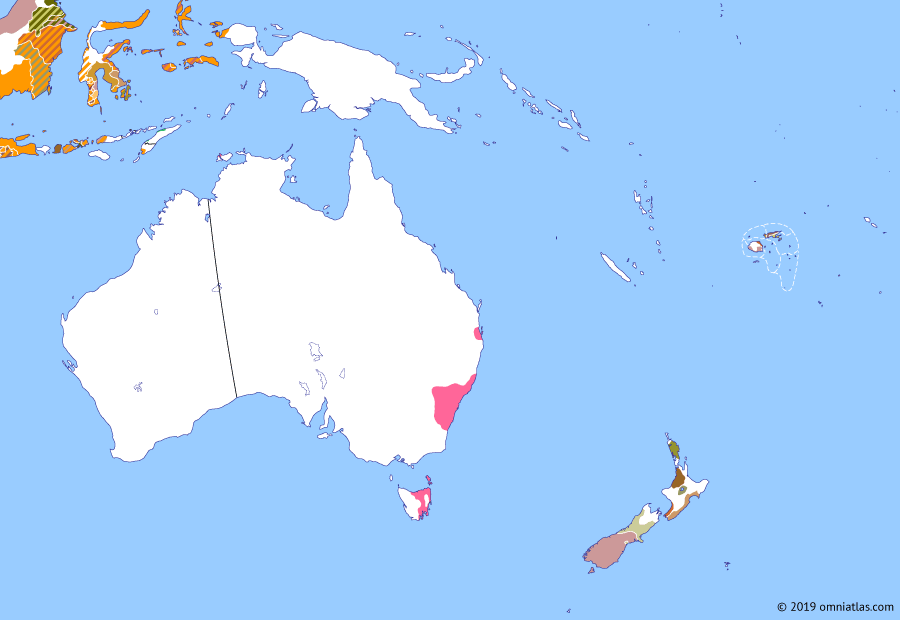Australasia 1825: Colony of Van Diemen’s Land

3 December 1825
3 Dec 1825
Colony of Van Diemen’s Land
26 Jan 1788 First Fleet
28 Apr 1789 Mutiny on the Bounty
7 Feb 1794 Australasia and the French Revolution
23 Jul 1801 Napoleonic France in Australasia
17 Oct 1803 Expanding from New South Wales
26 Jan 1808 Rum Rebellion
18 Feb 1811 Interregnum in the Dutch East Indies
7 May 1815 Settling the Australian interior
29 Feb 1820 Australasia after the Napoleonic Wars
3 Dec 1825 Colony of Van Diemen’s Land
18 Jun 1829 Swan River Colony
1 Jun 1832 Musket Wars
28 Dec 1836 Province of South Australia
6 Feb 1840 Treaty of Waitangi
16 Nov 1840 Colony of New Zealand
17 Feb 1846 Colony of North Australia
30 Aug 1849 Settlement of the South Island
1 Jul 1851 Colony of Victoria
3 Dec 1854 Eureka Rebellion
1 Sep 1855 Tongan Intervention in Fiji
6 Jun 1859 Colony of Queensland
The island of Van Diemen’s Land (Tasmania) was first colonized by the British in 1803 and quickly became the primary penal settlement in Australia—a position it would hold until it ended convict transportation fifty years later. In 1825 Van Diemen’s Land became a separate colony from New South Wales, but antagonism between settlers and Aboriginal Tasmanians led to six years of brutal warfare and the eventual resettlement of the few remaining Aborigines on offshore Flinders Island.